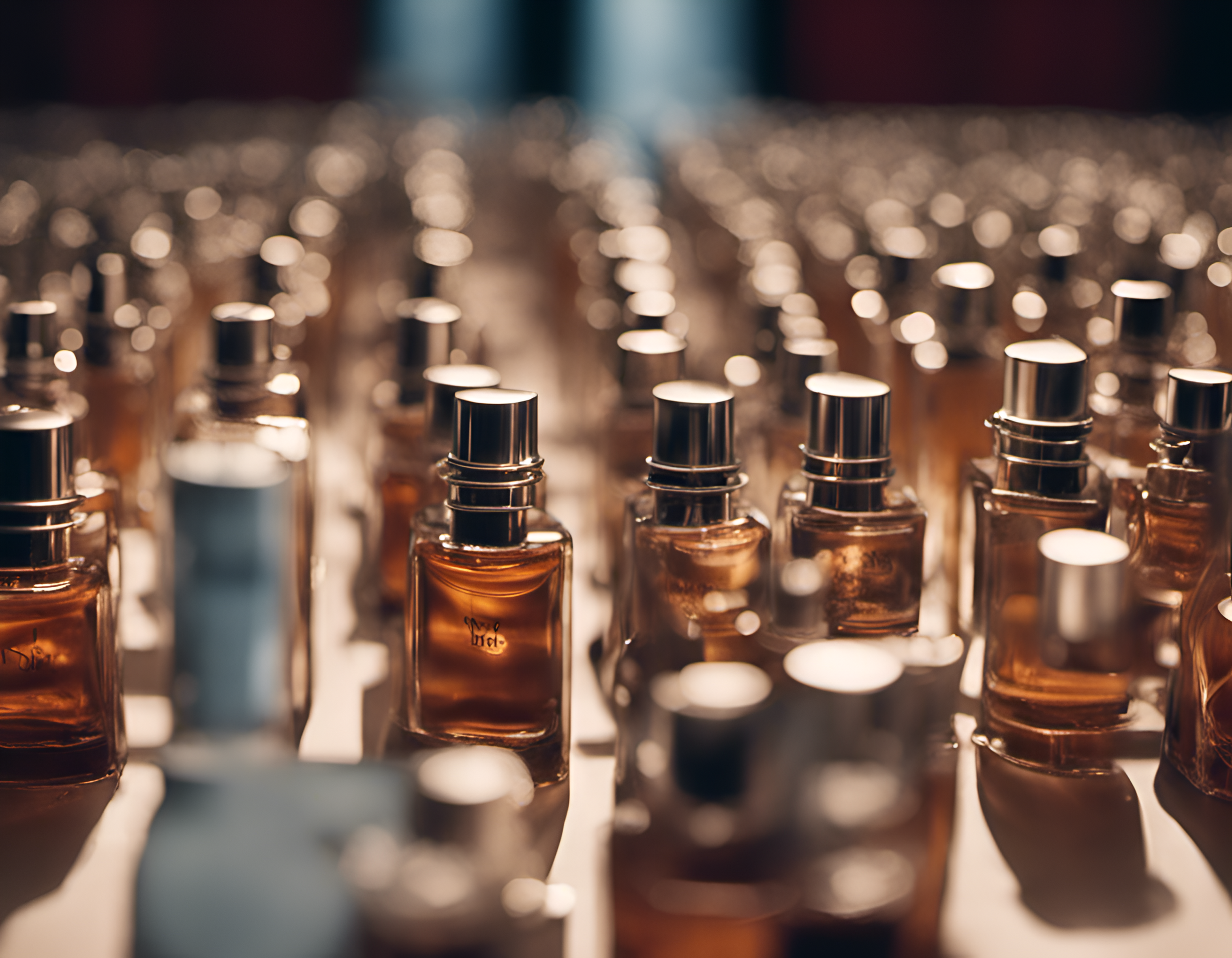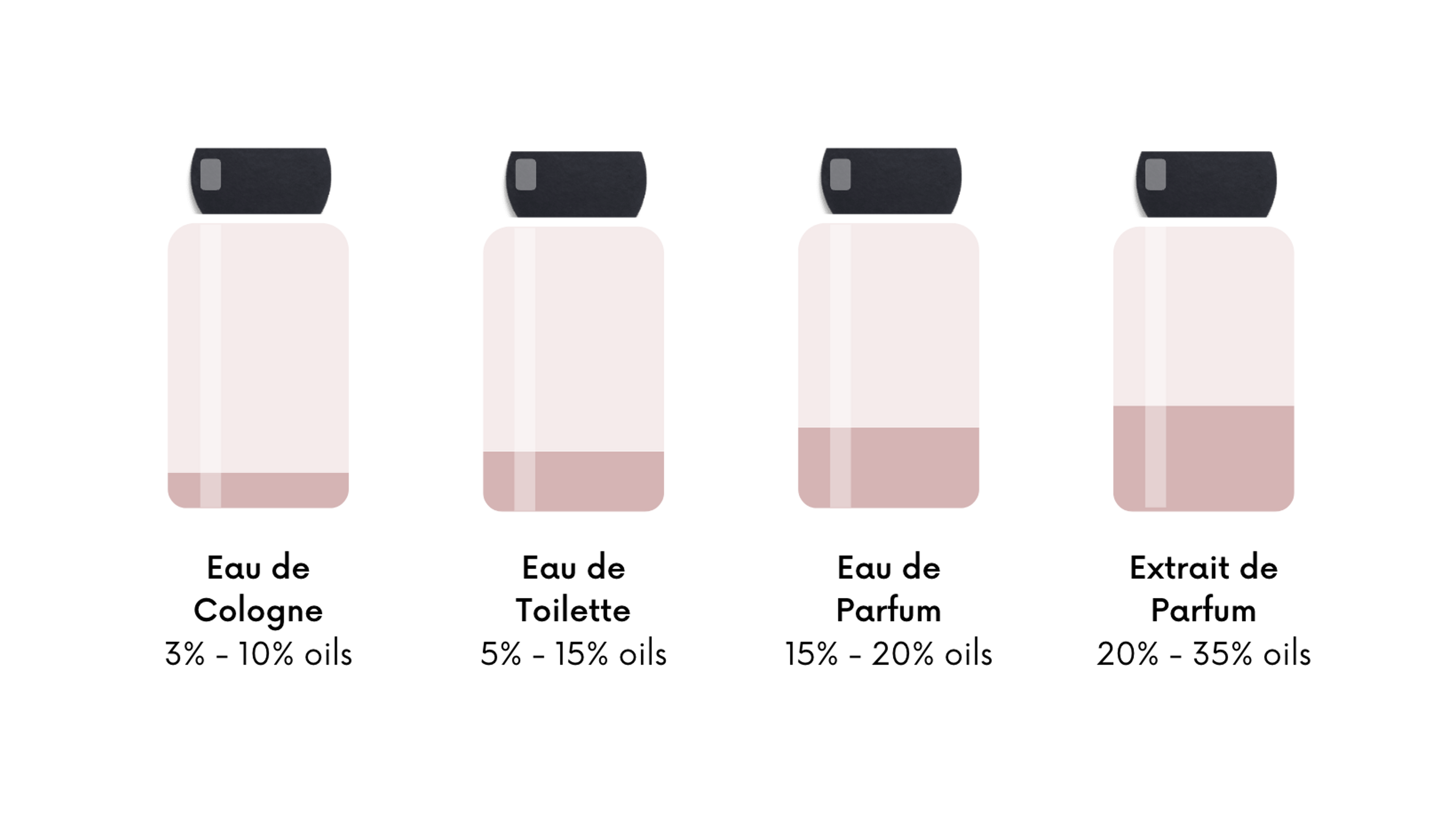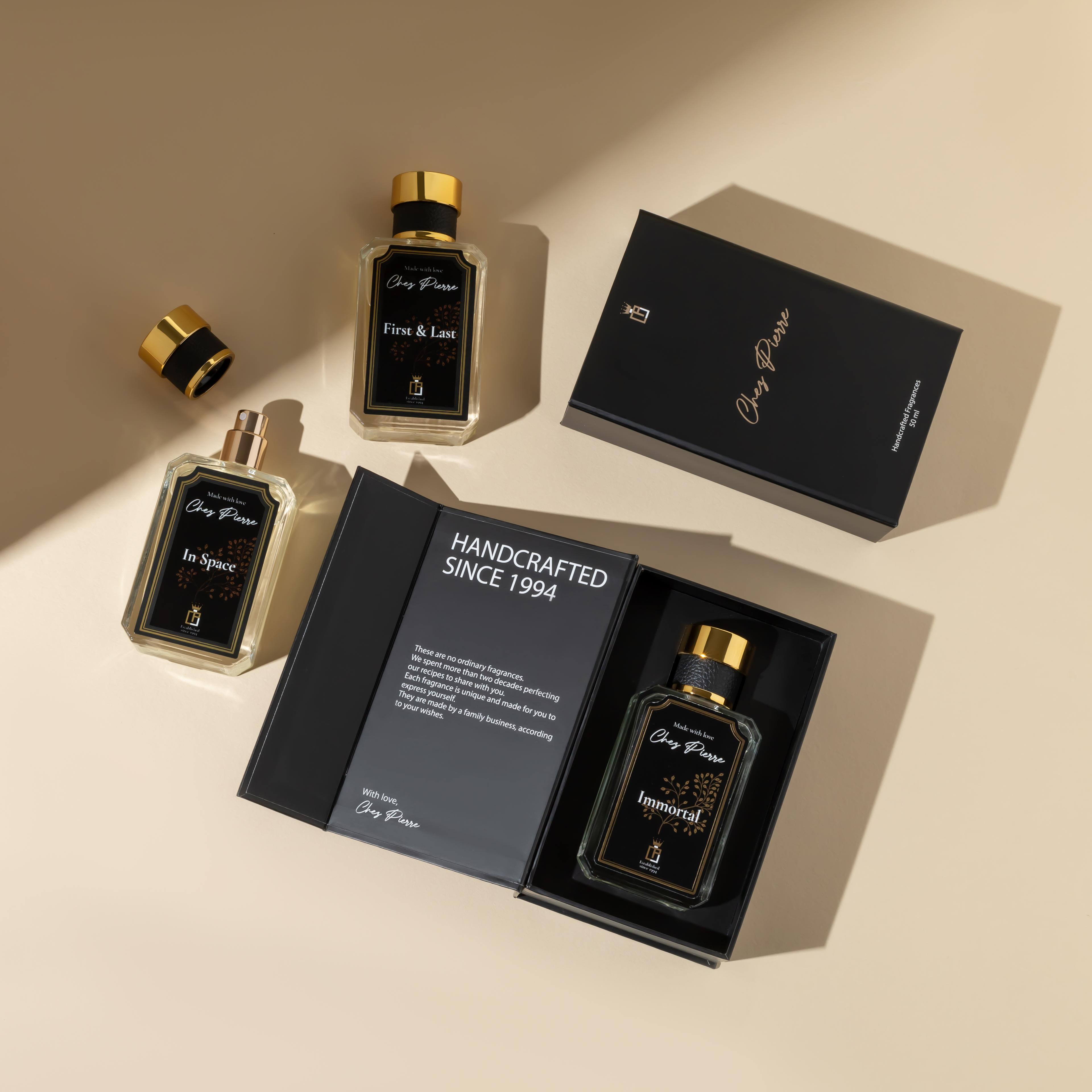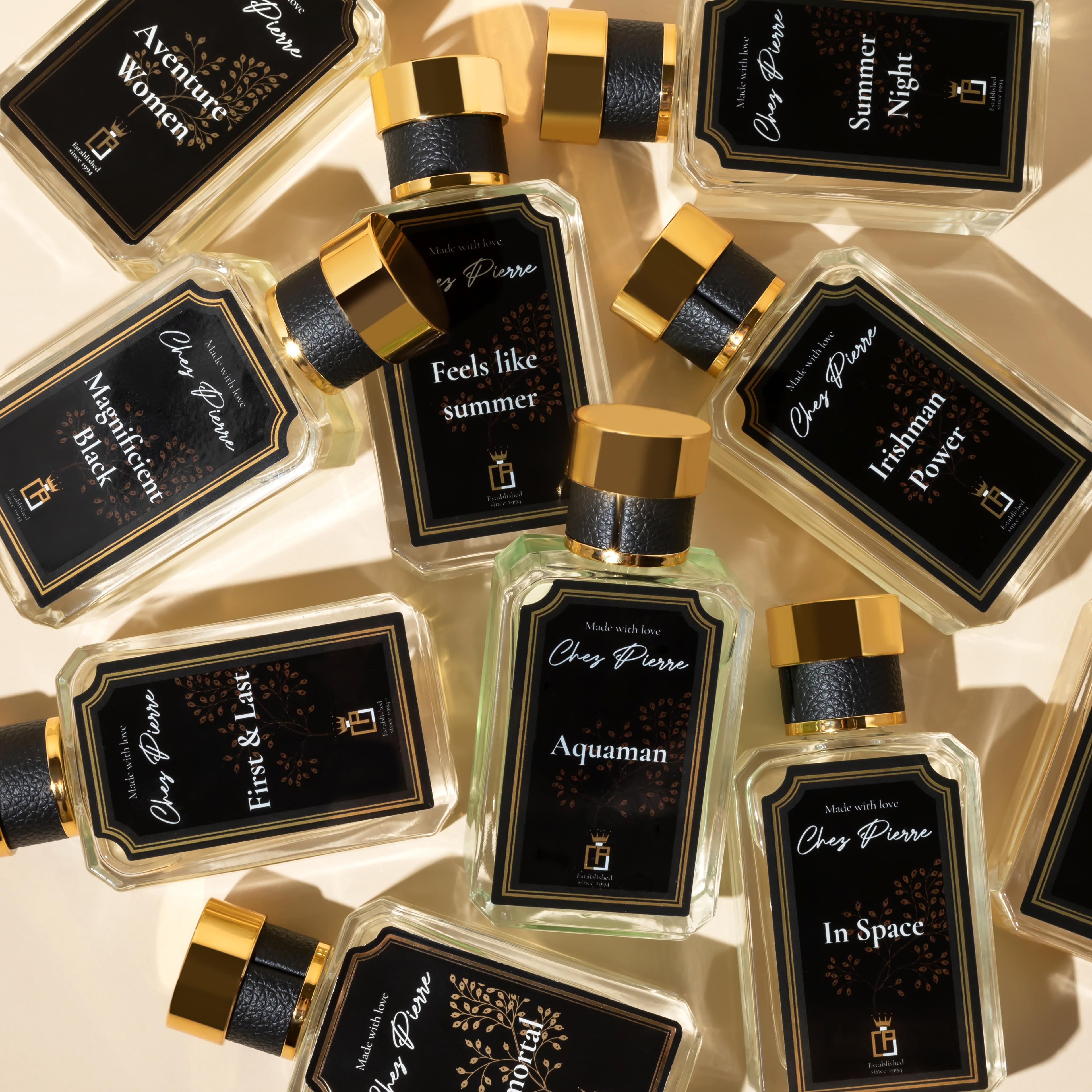
by Djordje Miladinovic
Price Beyond Fragrance: Demystifying the Factors Behind Luxury Perfume Costs
Have you ever questioned why the fragrances showcased within luxurious boutiques command such premium prices?
Did you know that the luxury perfume industry surpassed a staggering $14.88 billion in revenue in 2022, with projections indicating it will exceed $19.82 billion by the end of 2028, according to Statista?
Buy Affordable PerfumesAs a fragrance enthusiast looking for more affordable options, it's essential to understand what goes into creating these luxurious scents and the fascinating story behind their cost, such as:
- How rare and exquisite ingredients like oud oil, animal-derived musk, and ambergris impact pricing;
- How different concentration levels affect a perfume's longevity on your skin;
- Iconic packaging designs by famous artists and materials used in luxury fragrance packaging;
- Marketing efforts such as celebrity endorsements and high-profile advertising campaigns play a significant role in driving up prices;
- Exclusivity within niche perfumery.
Let's delve into the world of fragrance economics and explore why perfume often carries a hefty price that leaves us questioning its value.
Rare and exquisite ingredients
One major factor that contributes to the high cost of perfume is the use of rare and difficult-to-obtain ingredients. These unique components not only provide distinctive scents but also add a touch of luxury to premium perfumes.
Oud oil's scarcity and labor-intensive extraction
Oud oil, derived from Aquilaria trees, is one of the most expensive natural raw materials in perfumery due to its scarcity and complex extraction process. It takes several years for an infected tree to produce enough resin, which then requires skilled artisans for proper distillation. It is no wonder that scents from Aquilaria trees are called the scent of stress.
Animal-Derived Musk and Ethical Concerns
Musk, traditionally obtained from endangered animals like deer or civet cats, adds depth and warmth to fragrances. However, ethical concerns have led many brands to opt for synthetic alternatives - though these can still be pricey due to their complex chemical structures. Synthetic ingredients are man-made compounds that mimic the scents of natural ingredients or create entirely new fragrances.
The Unique Properties of Ambergris in Perfumery
Ambergris, sourced from sperm whales' digestive tracts, has been used as a fixative in luxury fragrances since ancient times. Its rarity, combined with legal restrictions on whale hunting, makes it one of the priciest perfume ingredients available today.
Besides these rare elements, other costly ingredients include Bulgarian roses, which bloom only once a year, or orris root, obtained through an extensive drying process.
Luxury perfumes are expensive due to rare ingredients like oud oil, animal-derived musk, and ambergris.
Perfume concentration and longevity
Luxury fragrances typically have higher concentrations of essential oils than cheaper alternatives, which results in better longevity on the skin. This means that expensive perfumes last longer on the wearer, providing a more potent scent experience throughout the day.
The different concentration levels of perfume play a significant role in determining their lasting power and overall quality.

Eau de Cologne vs. Eau de Toilette vs. Pure Parfum concentration levels
- Eau de Cologne: With only 2-5% fragrance oil concentration, Eau de Cologne is considered to be the lightest form of perfume. It usually lasts for about two hours before fading away.
- Eau de Toilette: Containing around 5-15% fragrance oil concentration, eau de toilette offers moderate longevity with an average wear time of three to four hours.
- Pure Parfum: Also known as extrait or pure perfume, this category boasts the highest fragrance oil concentration at around 20-30%. Its potency allows it to linger on your skin for up to eight hours or even longer, depending on individual factors such as body chemistry and environmental conditions.

Factors Affecting Perfume Longevity on Skin
Besides concentration levels, other factors can influence how long a scent lasts on your skin:
- Dry skin tends to absorb fragrances faster than oily skin types; therefore, applying moisturizer beforehand may help prolong its wear time.
- Heat increases evaporation rates, so wearing lighter scents during warmer months might be more suitable.
- The fragrance family of perfume also plays a role in its longevity; for example, oriental and woody scents tend to last longer than citrus or floral ones.
Luxury perfumes have higher essential oil concentrations, resulting in longer-lasting scents. Factors like skin type and fragrance family also affect longevity.
Packaging design and brand value
One aspect that significantly influences the price of perfumes is their packaging design and the associated brand value. Packaging serves not only as protection for the delicate fragrance but also adds aesthetic appeal, enhancing its perceived value among consumers.
Famous Artists' Iconic Designs for Parfum Bottles
Considering how much pricy scents rely on their packaging, some of the most recognizable perfume bottle designs are the work of well-known designers like Marc Jacobs, Jean Paul Gaultier, and Salvador Dali.
Some iconic perfume bottle designs include Salvador Dali's surreal creations, Marc Jacobs' whimsical daisy-shaped caps on his popular Daisy line of fragrances, and Jean Paul Gaultier's signature torso-shaped flacons. These unique designs contribute to a higher retail price while simultaneously increasing consumer interest in owning these works of art.
Materials Used in Luxury Fragrance Packaging
- Glass: High-quality glass is often used for expensive perfume bottles due to its durability and ability to preserve scents without altering them chemically.
- Metal: Metal accents like gold or silver plating add an opulent touch to premium fragrance packaging while providing additional protection against damage.
- Crystal: Brands like Baccarat and Swarovski have collaborated with perfume companies to create luxurious crystal bottles, elevating the overall cost of these fragrances due to their exquisite craftsmanship and materials.
- Precious Stones: Some perfumes feature embellishments such as diamonds or other precious stones, further increasing their value and exclusivity.
In essence, the packaging design and brand value play a crucial role in determining the price point for perfumes. By investing in unique designs created by renowned artists and using high-quality materials, luxury fragrance brands can command higher prices while offering consumers an experience that goes beyond just scent alone.
Expensive perfumes are often priced high due to their packaging design and brand value. Luxury fragrances use high-quality materials like glass, metal, crystal, and precious stones in their packaging to add aesthetic appeal and increase perceived value among consumers. Iconic perfume bottle designs by famous artists also contribute to a higher retail price while simultaneously increasing consumer interest in owning these works of art.
Marketing Efforts and Celebrity Endorsements
One of the significant factors contributing to the high price tag of expensive perfumes is the substantial investment in marketing efforts.
Brands allocate millions of dollars towards advertising campaigns, often featuring celebrity endorsements or elaborate visuals that capture consumers' attention and create a strong association between the fragrance and its prestigious image.
The Role of Celebrity Endorsements in Perfume Marketing
Celebrities play a crucial role in promoting fragrances, as their popularity helps build brand recognition and encourage purchases among fans.
For instance, Estee Lauder's Aerin Fragrances saw a surge in sales when they partnered with popular celebrities like Gwyneth Paltrow for their campaign.
However, these collaborations come at a cost; stars can earn anywhere from 5% to 10% royalties on sales simply by lending their namesake to fragrance lines. This additional expense inevitably gets passed onto consumers through higher-priced perfumes.
High-Profile Advertising Campaigns and Their Impact on Pricing
- Chanel No 5: The iconic ad starring Nicole Kidman reportedly cost $33 million alone. Directed by Baz Luhrmann, this extravagant commercial showcased the opulence associated with Chanel's signature scent - ultimately justifying its premium pricing.
- Dior J'adore: Featuring Charlize Theron strutting down an ethereal runway surrounded by golden threads cascading from above, this visually stunning advertisement helped solidify Dior J'adore as one of today's most sought-after luxury fragrances.
- Gucci Guilty: With Jared Leto as the face of Gucci Guilty, this ad campaign combined elements of luxury and edginess to appeal to a younger demographic seeking high-end fragrances.
The investments made by brands in celebrity endorsements and high-profile advertising campaigns ultimately contribute significantly to their final retail prices.
Luxury perfumes are expensive due to the significant investment in marketing efforts, including celebrity endorsements and high-profile advertising campaigns. Celebrities play a crucial role in promoting fragrances, but their collaborations come at a cost that gets passed onto consumers through higher-priced perfumes. The investments made by brands ultimately contribute significantly to their final retail prices.
Exclusivity and Niche Perfumery
Exclusivity remains another key driver behind steep perfume prices.
Niche perfumery focuses on creating unique scents using exceptional quality raw materials catering specifically towards connoisseurs willing to pay top dollar for limited edition releases capturing the essence of rarity itself.
Defining Niche Perfumery and its Appeal to Collectors
Niche perfumes are often created by independent, artisanal brands that prioritize craftsmanship over mass production.
These fragrances stand out from mainstream offerings due to their distinctive compositions, use of premium ingredients, and smaller-scale distribution channels.
As a result, they cater to an audience seeking exclusivity in their scent choices. This demand for one-of-a-kind fragrances has led some niche perfume houses like By Kilian, Creed Boutique, or Le Labo Fragrances to command higher price points than more widely available designer counterparts.
Examples of Exclusive, High-Priced Fragrance Releases
- The House of Creed's Royal Service: Priced at $1,750 per bottle with only 1000 bottles produced worldwide, this bespoke fragrance is made using rare ingredients such as Florentine iris absolute and Indian oud oil.
- Rojas Parfums' Haute Luxe: Retailing at $4,000 per bottle due to its labor-intensive production process and use of costly materials like orris butter, this fragrance is a testament to the artistry behind niche perfumery.
- Clive Christian's No.1 Imperial Majesty: With only ten bottles ever created, each adorned with a five-carat diamond-studded collar and priced at $215,000 per bottle, this perfume epitomizes luxury in the world of fragrances.
Exclusivity plays an essential role in driving up perfume prices as collectors are willing to pay for limited edition releases that offer unique scent experiences. Niche perfumery has capitalized on this demand by crafting distinctive fragrances using rare ingredients and artisanal techniques, which further elevate their costs.
Consumer Demand for Luxury Fragrances
Recent consumer trends have been a major factor in escalating the prices of premium perfumes. During times of uncertainty, such as pandemic lockdowns, people sought comfort in small luxuries. This led to booming fragrance sales, particularly within the higher-priced Eau de Parfums segment.
Pandemic-Driven Demand for Premium Scents
The surprising reason perfume prices have soared can be attributed to consumers increasingly gravitating towards upscale fragrances during the pandemic.
With more time spent at home and fewer opportunities for socializing or traveling, many individuals turned to premium perfumes as a form of self-care and indulgence. As a result, prestige fragrances experienced exceptional sales growth despite the economic challenges faced by other industries.
Personalized Subscription Services Targeting Luxury Fragrance Enthusiasts
- Scentbird: By providing virtual consultations and trial-sized samples tailored to individual preferences, Scentbird allows shoppers to find their perfect fragrance match while exploring high-end options they may not have considered otherwise.
- Aerin Fragrances: Another example is Estee Lauder's line of luxury scents under its Aerin brand which saw remarkable success amidst global turmoil.
- Scented Candles: As people spent more time indoors, the demand for high-quality candles with complex scent profiles also increased. Brands such as Jo Malone and Diptyque benefited from this surge in interest, further driving up average retail prices within the fragrance market.
Consumer demand for luxury fragrances has driven up the cost of high-end perfumes, particularly during pandemic lockdowns when people sought comfort in small luxuries. Premium scents experienced exceptional sales growth as consumers turned to upscale fragrances for self-care and indulgence.
Are Expensive Perfumes Worth It?
Whether expensive perfumes are worth their price tag is a subjective question. It depends on individual preferences and what one values in a perfume. Some people are willing to pay more for a unique scent, high-quality ingredients, and luxurious packaging, while others prioritize affordability.
Alternatives to Expensive Perfumes - Chez Pierre, Your Trusted Source for Affordable Fragrance Excellence
Established in 1994, Chez Pierre has become a renowned name in the fragrance industry, offering affordable alternatives to expensive perfumes. With our deep expertise and experience, we have garnered a strong reputation as a trusted authority in providing high-quality fragrances without exorbitant price tags.

Chez-Pierre Perfume Company
As we explore the reasons behind the high cost of perfumes in this article, it is essential to highlight Chez Pierre's commitment to delivering exceptional fragrance experiences that won't break the bank. With over 10,000 satisfied customers, we have established ourselves as a top brand for fragrance lovers on a budget.
At Chez Pierre, we understand the intricacies of perfume creation. Our collaboration with esteemed French perfumiers, who possess both innovative approaches and profound historical knowledge, has allowed us to stay at the forefront of fragrance-making. We bring the essence of France, the perfume capital of the world, to our creations, ensuring that our offerings embody the artistry and sophistication that perfumery represents.
With a palette of over 150 men's and women's fragrances, Chez Pierre offers a diverse range of perfume dupes to suit every preference. We believe that luxury should be accessible to all, and that's why we meticulously craft unique, affordable fragrances that captivate the senses and ignite emotions.

Chez Pierre Perfumes
Choose Chez Pierre as your trusted source for exquisite fragrances that won't break the bank. Experience our expertise, trust our commitment to quality, and discover the joy of wearing a fragrance that speaks to your soul. Embrace the allure of affordable luxury with Chez Pierre.
Conclusion - Why are Perfumes so Expensive?
It's clear that there are several reasons why expensive perfumes come with a high price tag:
- Rare and exquisite ingredients: The use of rare and exquisite ingredients adds to the cost of perfumes, as these materials are often limited in supply and require extensive sourcing efforts.
- Labor-intensive extraction processes: Ingredients like oud oil and ambergris involve labor-intensive extraction methods, further driving up production costs.
- Packaging design and brand value: Luxury fragrance packaging and iconic bottle designs by famous artists contribute to the overall price, as they enhance brand value and exclusivity.
- Marketing efforts and celebrity endorsements: High-profile advertising campaigns, celebrity endorsements, and personalized subscription services targeting luxury fragrance enthusiasts play a significant role in pricing due to the associated marketing costs.
- Exclusivity and niche perfumery: Niche perfumery, with its limited edition releases and appeal to collectors, along with the consumer demand for luxury fragrances, contribute to the premium pricing of certain perfumes
However, shoppers can still find affordable alternatives at Chez Pierre without sacrificing quality ingredients or professional perfumers' expertise. Understanding the factors behind why expensive fragrances cost so much can help shoppers make informed decisions when buying their next signature scent.
Buy Affordable PerfumesFrequently Asked Questions
Why is perfume so expensive?
Perfume prices are influenced by several factors, including rare ingredients, concentration levels, packaging design, marketing efforts, exclusivity, and consumer demand. Some perfumes contain costly natural ingredients like oud oil or ambergris. Additionally, higher concentrations of fragrance oils contribute to longer-lasting scents but also increase production costs.
Why do people buy expensive perfumes?
People purchase expensive perfumes for various reasons, including the perceived quality and longevity of luxury fragrances, unique scent profiles offered by niche brands, the status symbol associated with high-end products, and personal preferences in scent characteristics. Moreover, comfort-seeking behavior drives consumers towards indulging in luxurious scents.
Why are high-end perfumes expensive?
High-end perfumes carry a premium price due to factors such as the use of rare and exotic ingredients that drive up production costs, elaborate packaging designs incorporating luxury materials, extensive marketing campaigns featuring celebrity endorsements, limited edition releases creating a sense of exclusivity, and niche market targeting catering to specific tastes.
Why Is perfume more expensive than cologne?
The main reason why perfume is typically more expensive than cologne lies in their differing concentration levels. Perfume contains a higher percentage of fragrance oils compared to cologne (15-40% vs. 2-5%), resulting in increased lasting power but also elevated production costs. This difference leads to higher retail prices for perfumes over colognes.
How To Smell Good
Why Are Perfumes Expensive
How to Apply Cologne
Types Of Perfume
Eau de Parfum
Eau de Toilette
Eau de Cologne
Eau Fraiche
How to Make Perfume Last Longer
Where to Spray Perfume
How Is Perfume Made?
Best Niche Fragrance Houses and Perfumes
- How Many Types of Perfume Actually Exist?
- Best Ways to Apply the Cologne-According to Our Cologne Experts
- How To Smell Good - The Best Expert Advice You Will Ever Get
- Eau de Toilette or Eau de Parfum- Which One Should You Wear?
- From Morning Mist to Evening Echo: 12 Hacks to Empower Your Scent Presence
- Spritz Wisely: A Comprehensive Guide on Where to Spray Perfume
- Perfume Celebrities: Meet The Most Famous Perfume Brands In The World
- Essential Components: How Perfume is Created From Scratch
- French Elegance in a Bottle: The Rise and Allure of Top Perfume Brands
- Luxury within Reach: The Eau Fraiche Effect in the Cologne Cosmos
- The Chronicles of Cologne Water: Reveiling A Scent Legacy
- Eau de Parfum - The Undisputed Leader of Fragrances